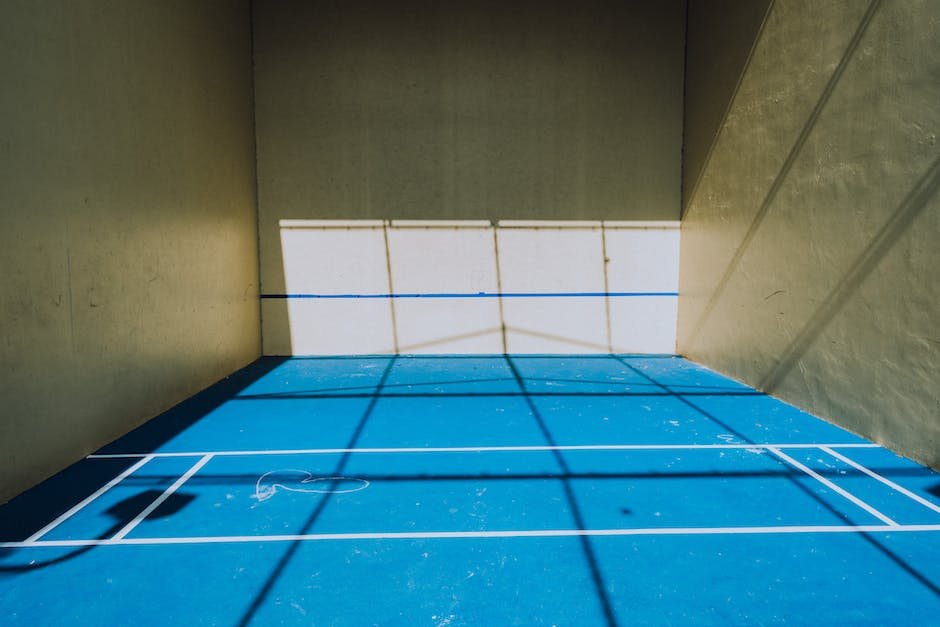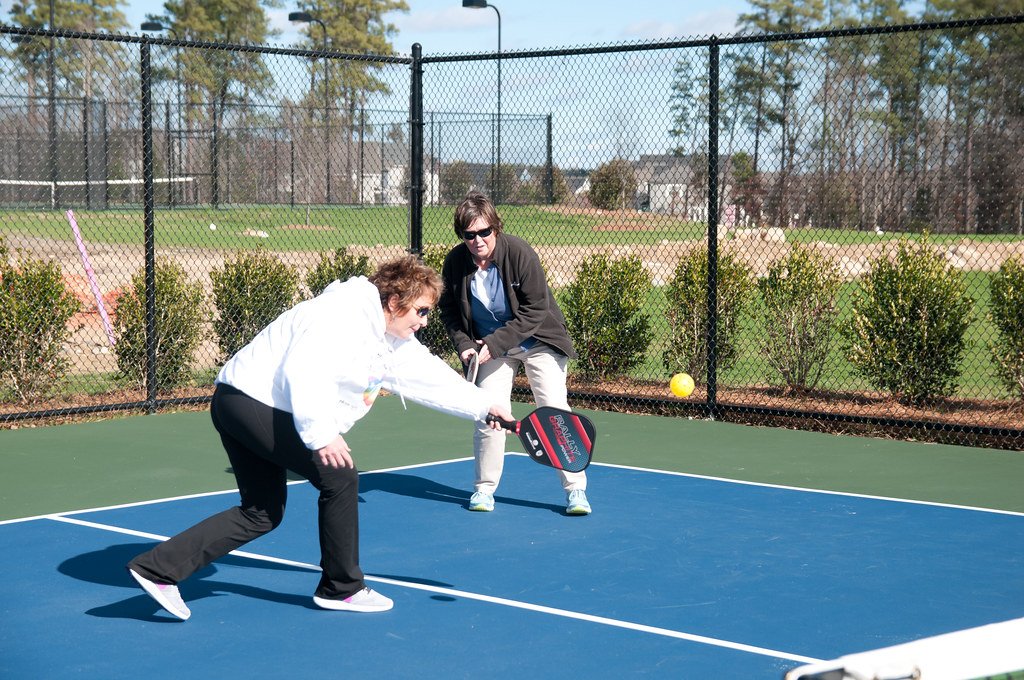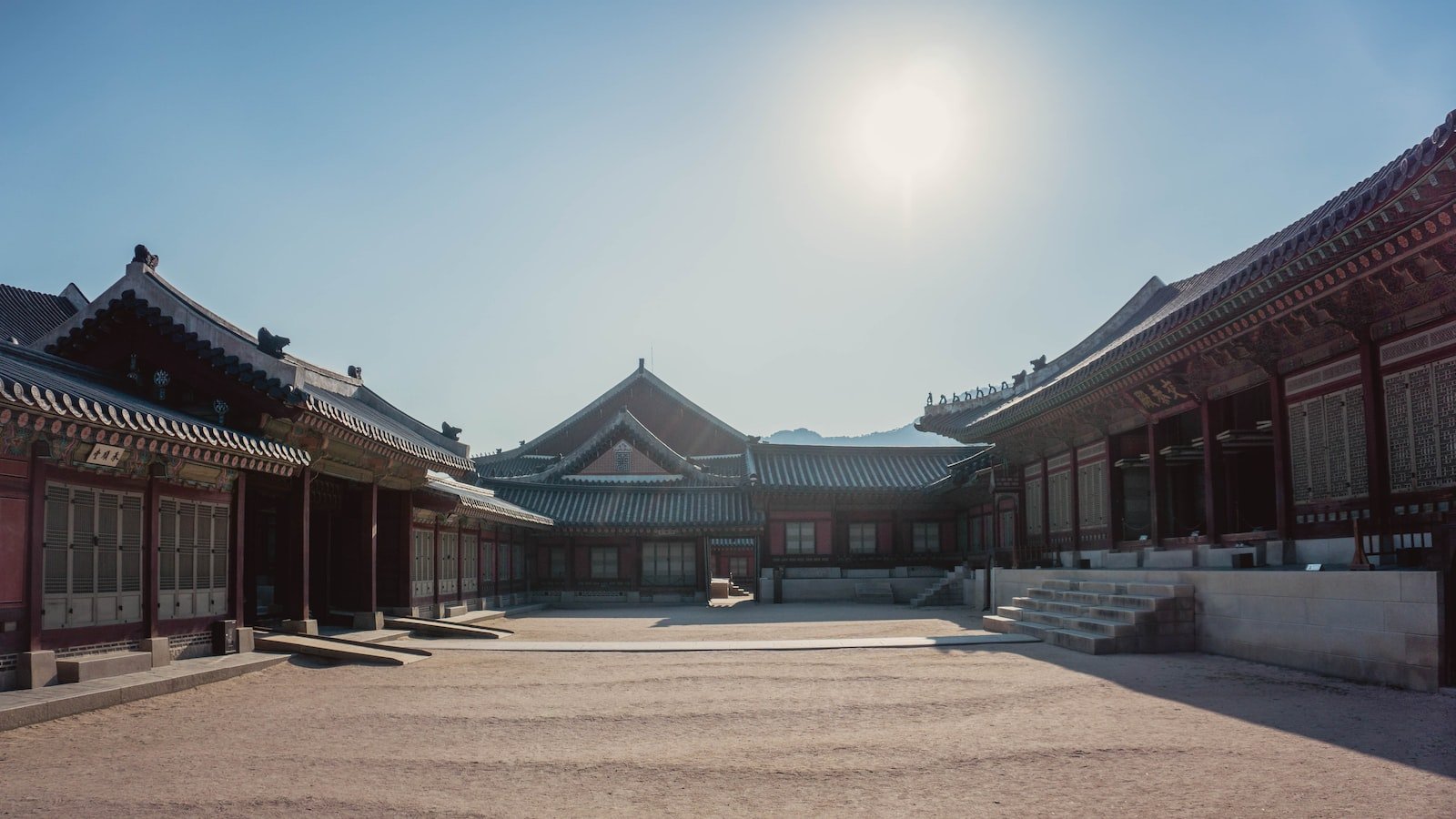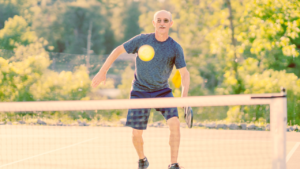Picture this: a group of friends gathered on a sunny afternoon, laughing and sweating as they engage in a fast-paced game that blends elements of tennis, badminton, and ping pong. This is pickleball – a sport that has been steadily gaining popularity in recent years, captivating both the young and the young at heart. But have you ever wondered how the design of pickleball courts has evolved throughout history? From humble beginnings to the present day, the changing face of pickleball court design reflects not only the sport’s growth but also its unique blend of tradition and adaptability. Strap on your sneakers as we take a journey through time, exploring the fascinating court design transformations that have shaped the game we love.
Table of Contents
- The Evolution of Pickleball Court Design
- New Trends in Pickleball Court Surface Materials
- Innovative Court Features for Enhanced Pickleball Experience
- Importance of Proper Court Layout and Dimensions
- Key Considerations for Modern Pickleball Court Construction
- Q&A
- To Wrap It Up

The Evolution of Pickleball Court Design
Pickleball, a sport that combines elements of tennis, badminton, and ping pong, has been gaining popularity worldwide. With this surge in interest, the design of pickleball courts has also seen an evolution over the years.
One noticeable change in court design is the introduction of dedicated pickleball courts. Originally, pickleball was played on existing tennis courts with modified boundaries. However, as the sport gained its own identity and more players joined in, dedicated courts were constructed, designed specifically for pickleball. These courts have distinct dimensions and layouts that cater to the fast-paced nature of the game.
In addition to dedicated courts, the surface materials used on pickleball courts have also evolved. Initially, pickleball was played on concrete or asphalt surfaces. However, as players realized the need for improved traction and shock absorption, different materials such as rubberized surfaces and synthetic turfs were introduced. These surfaces provide enhanced grip and cushioning, reducing the risk of injuries and ensuring a better playing experience for participants.
Not only have the dimensions and surfaces of pickleball courts evolved, but there have also been advancements in court accessories. Nets, for instance, have been specifically designed with durability and tension adjustability in mind. Improved net systems now feature easy-to-adjust heights, allowing players of various skill levels to enjoy the game comfortably. The development of portable nets has also made it possible for pickleball enthusiasts to set up temporary courts in their own backyards or at community events.
In conclusion, has transformed the way the sport is played and experienced. From makeshift adaptations on tennis courts to purpose-built pickleball courts, the game has come a long way. With advancements in surface materials and court accessories, players can now enjoy a safer and more exciting game, whether they’re playing competitively or casually.
New Trends in Pickleball Court Surface Materials
Pickleball, the popular racquet sport that combines elements of tennis, badminton, and ping pong, is gaining momentum worldwide. With its rapid growth, court surface manufacturers are continuously exploring new materials to enhance the playing experience. Here are some exciting trends in pickleball court surface materials:
1. Cushioned Surfaces: To reduce the impact on players’ joints and muscles, pickleball courts are now incorporating cushioned surfaces. These specially designed materials provide shock absorption during intense gameplay, minimizing the risk of injuries and allowing players to enjoy the game for longer periods.
2. Multi-layered Composition: The latest trend focuses on multi-layered court surface materials that combine different components to enhance performance. These innovative surfaces typically consist of a top layer that provides optimal ball control, a middle layer that offers durability and traction, and a base layer that ensures stability and excellent drainage.
3. Eco-Friendly Options: As sustainability becomes increasingly important, manufacturers are exploring eco-friendly materials for pickleball courts. Some companies are now offering surfaces made from recycled rubber, allowing players to enjoy their game while contributing to environmental preservation.
With these emerging trends in pickleball court surface materials, players can expect an improved and more enjoyable playing experience. As the sport continues to grow, innovation in court surfaces will undoubtedly enhance the overall quality of the game, making it even more enticing for players of all skill levels.
Innovative Court Features for Enhanced Pickleball Experience
When it comes to bringing innovation to the world of pickleball, there are exciting developments happening on the court. From advanced technology to thoughtful design, these innovative court features are revolutionizing the way players experience this beloved sport.
1. LED Court Lighting: Imagine stepping onto a pickleball court bathed in vibrant, energy-efficient LED lighting. Not only does LED lighting ensure clear visibility, but it also reduces glare, providing a more comfortable playing environment for players of all skill levels. With customizable lighting options, players can even dim or adjust the brightness to create the perfect ambiance for their games.
2. Smart Court Surfaces: Gone are the days of standard asphalt or concrete playing surfaces. Enter the era of smart court surfaces! These innovative materials have been designed to enhance grip, reduce joint strain, and minimize the risk of injuries. Whether it’s a high-performance synthetic surface or shock-absorbing rubber, these smart courts offer improved traction and shock absorption, allowing players to play their best while staying injury-free.
3. Automated Ball Retrievers: Tired of chasing after stray pickleballs? Get ready to say goodbye to this frustration with automated ball retrievers. These ingenious contraptions are equipped with sensors to detect and collect pickleballs from all corners of the court. Not only do they save players time and energy, but they also add an element of fun to the game. No more interrupted rallies due to lost balls!
These innovative court features are just a glimpse into the future of pickleball. As technology continues to advance, we can only imagine what other exciting developments await players in their quest for the ultimate pickleball experience!

Importance of Proper Court Layout and Dimensions
When it comes to the judicial system, the layout and dimensions of a courtroom play a crucial role. Both the design and size of a courtroom can significantly impact the overall efficiency and effectiveness of court proceedings.
Having a proper court layout is essential for maintaining order and ensuring that everyone involved in the proceedings can communicate effectively. The layout should facilitate clear visibility for all participants, including judges, lawyers, defendants, witnesses, and the jury.
The dimensions of a courtroom are equally important. Adequate space must be provided to accommodate all necessary equipment, such as the judge’s bench, witness stand, defendant’s dock, counsel tables, and jury box. Additionally, consideration should be given to the seating arrangements for spectators, media, and other individuals attending the proceedings.
A well-designed courtroom with appropriate dimensions not only fosters a sense of professionalism but also promotes fairness and impartiality. It allows for smooth interaction between all parties and helps create an atmosphere conducive to justice.
Key :
- Enhances communication and visibility among participants
- Promotes order and professionalism during court proceedings
- Accommodates all essential courtroom equipment and seating arrangements
- Ensures fairness and impartiality
In conclusion, the importance of a proper court layout and dimensions cannot be overstated. By providing an optimal environment for legal proceedings, it contributes significantly to the smooth administration of justice.
Key Considerations for Modern Pickleball Court Construction
Important Factors to Consider for Building a Modern Pickleball Court
Constructing a modern pickleball court involves careful planning and consideration of several key factors to ensure a high-quality playing surface and an enjoyable experience for players. Here are some important considerations to keep in mind:
- Surface Material: Choosing the right surface material is crucial for pickleball court construction. The most common materials used are asphalt and concrete, both of which offer their own benefits. Asphalt is preferred for its ability to absorb impact and provide better grip, while concrete offers a more durable and low-maintenance option.
- Dimensions: The dimensions of a pickleball court should adhere to the official regulations for proper gameplay. A standard court measures 20 feet wide by 44 feet long, with non-volley zones (or kitchen areas) extending 7 feet from the net on both sides.
- Fencing and Netting: Installing appropriate fencing and netting around the court is essential for safety and boundary control. The fence should be sturdy and tall enough to prevent balls from leaving the playing area, while the net should be positioned at the correct height of 34 inches in the middle and 36 inches at the sidelines.
Maintaining these key considerations during pickleball court construction will ensure a top-notch playing experience for enthusiasts of this fast-growing sport. By creating a well-designed court, players can fully enjoy the exciting and competitive nature of the game while improving their skills and physical well-being.
Q&A
How has the design of pickleball courts evolved over the years?
The design of pickleball courts has evolved significantly since its inception. Originally, they were adapted from existing tennis and badminton courts, but now there are standardized court dimensions, markings, and surfaces specifically designed for pickleball.
What are the standard dimensions for a pickleball court?
A standard pickleball court is 20 feet wide and 44 feet long. It is divided into two halves by a net, just like tennis. However, there are also smaller-sized courts available for recreational play and practice.
What are the differences between indoor and outdoor pickleball courts?
The primary difference between indoor and outdoor pickleball courts lies in the playing surface. Outdoor courts are typically made of asphalt or concrete, providing durability but potentially increasing ball speed. Indoor courts, on the other hand, are usually made from wood, sport tiles, or carpet to reduce noise and offer better control.
How have court markings evolved in pickleball?
In the earlier days, there were no standardized court markings for pickleball, which often led to confusion. However, now there are clear and consistent markings for both singles and doubles play, including boundaries and kitchen lines, making it easier for players to adhere to the rules.
What is the “Non-Volley Zone” or ”Kitchen” line, and why is it important?
The “Non-Volley Zone” or “Kitchen” line is a 7-foot area on both sides of the net, where players are not allowed to volley the ball. This rule prevents players from dominating the game by staying close to the net for easy winning shots. It adds strategy and promotes a more dynamic style of play.
Has the surface of pickleball courts undergone any changes over time?
Yes, the surface of pickleball courts has seen some changes over time. Initially, most courts were made of hard materials like concrete or asphalt. However, new materials such as cushioned sport tiles, which are easier on the joints, have gained popularity for their enhanced comfort and improved traction.
What future changes can we expect in pickleball court design?
In the future, we can expect continued innovation in court surfaces to provide better shock absorption and improved player safety. Additionally, there might be more specialized court designs to accommodate different skill levels and allow players to personalize their playing experience.
To Wrap It Up
As the final chapter of this journey through the evolving landscape of pickleball court design draws to a close, it is impossible not to marvel at the remarkable transformation that has taken place over the years. From humble beginnings on the smooth asphalt of Bainbridge Island, to the modern arenas that now dot the globe, the changing face of pickleball courts reflects a sport that has grown in popularity and sophistication.
As we reflect upon the early days, where simple chalk lines marked the boundaries and woven nets sagged with wear, a nostalgic aura envelops us. Those early pioneers, embracing the essence of community and camaraderie, competed on makeshift courts, their only concern the relentless pursuit of pickleball excellence. Those humble beginnings set the stage for a revolution in the world of court design.
Our narrative then ventures into a golden age of exploration and innovation. Architects and urban planners, captivated by the allure of pickleball, embraced the challenge of creating purpose-built spaces that could elevate the game to new heights. The slap of the paddle against the polymer surface went hand in hand with the symphony of construction workers crafting state-of-the-art arenas that would become the arena for classic matches.
Shapes shifted and colors danced as court geometry underwent a metamorphosis. From the first rectangular formations to the now-iconic asymmetrical trapezoids, each iteration came alive with its own unique charm, leaving an indelible impression on both players and spectators alike. Swooping lines and arcs, strategically placed corners and specialized zones kept the game dynamic and fluid, offering endless possibilities of challenging rallies and strategic maneuvers.
The palette of colors became a playground for the imagination, a vibrant fusion of tradition and contemporary flair. The once monochrome canvases burst into life as rich greens, vivid blues, and the occasional bold red infused the spaces with a renewed sense of energy. Each hue telling a story—of passion unleashed, resilience tested, and dreams fulfilled.
Yet, amid all this transformation, one constant prevails: the spirit of pickleball. Through the gentle echoes bouncing off the hallowed walls, we perceive the laughter, banter, and indomitable competitive spirit that has forever characterized this remarkable sport. This is an ode not just to the evolution of court design, but also to the remarkable individuals who lend their heart and soul to the game.
As we conclude this journey, let us cherish the changing face of pickleball courts, for in these spaces, aspirations soar, legends are born, and memories forged. Let us revel in the knowledge that the future holds even greater wonders, as a new generation of pioneers yearns to leave an indelible mark on this ever-changing canvas. The spirit of pickleball remains vibrant, forever etching its imprint on the court of evolution.
As an affiliate, my content may feature links to products I personally use and recommend. By taking action, like subscribing or making a purchase, you’ll be supporting my work and fueling my taco cravings at the same time. Win-win, right?
Want to read more? Check out our Affiliate Disclosure page.




